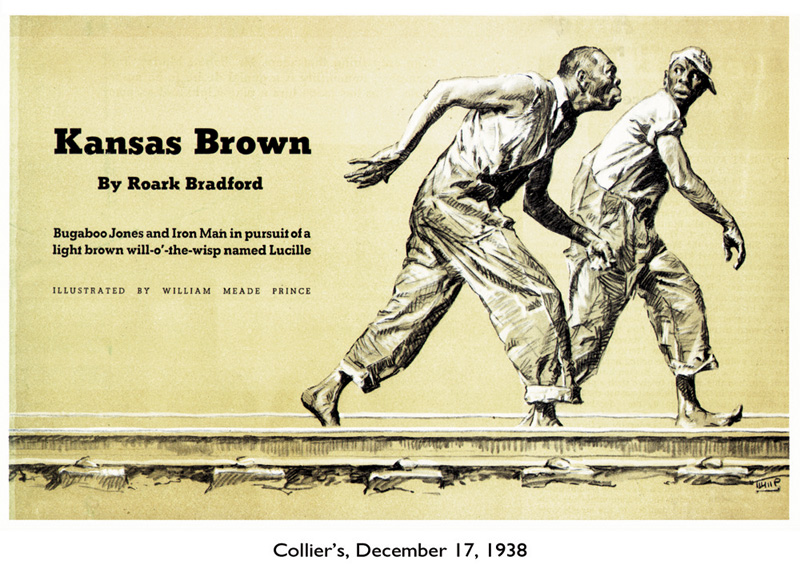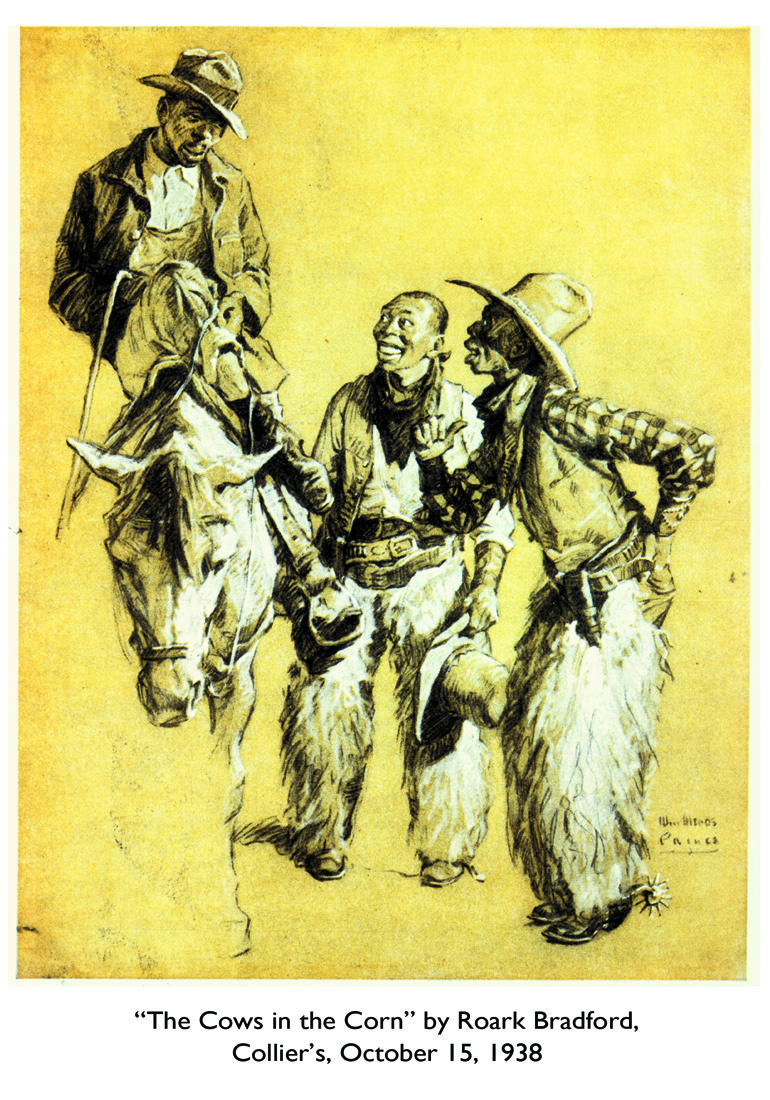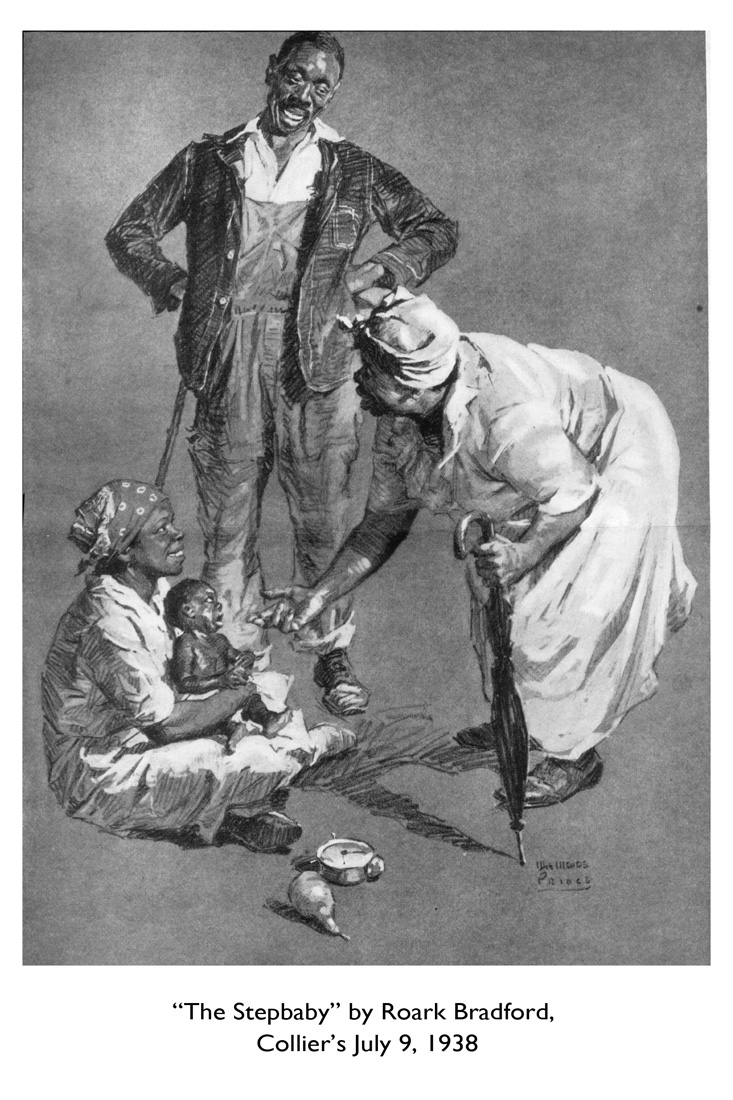Upon reviewing these images in preparation for this series of posts, what began to gel for me is not only William Meade Prince's toned-paper technique but the subtext of how he seems to have become associated, in the minds of the Collier's editors, with Roark Bradford's stories.

I also can't help thinking of Will Eisner's treatment of Ebony around this same time, or how Chop-Chop was portrayed in the early Blackhawk comics of the same time -- the whole idea of how racial condescension was acceptable in the day.

A bit of information on writer Roark Whitney Wickliffe Bradford: Born in TN in 1896 and died in New Orleans LA in 1948. His literary work was rather prolific through the '30s and '40s-- short stories and novels about the U.S. South and especially about African-Americans in the South-- and reportedly quite well received in its time.


He worked for the New Orleans Times-Picayune, and then for the U.S. Naval Reserve Bureau during the Second World War.

Perhaps the most interesting facet of his career was that his story "Old Man Adam and His Chillun" was adapted by Marc Connelly into his famous Pulitzer Prize-winning play "The Green Pastures."

Bradford has more or less descended into relative obscurity nowadays, however, probably because his style and his subject matter would today be seen as -- to put it diplomatically -- severely dated.

Continued tomorrow.
* Tony Gleeson is a freelance illustrator. Since 1974 he has created finished art for the book, editorial and advertising industries as well as character design and concept art for gaming, film, television and theme parks. He lives in Southern California.






0 comments:
Post a Comment